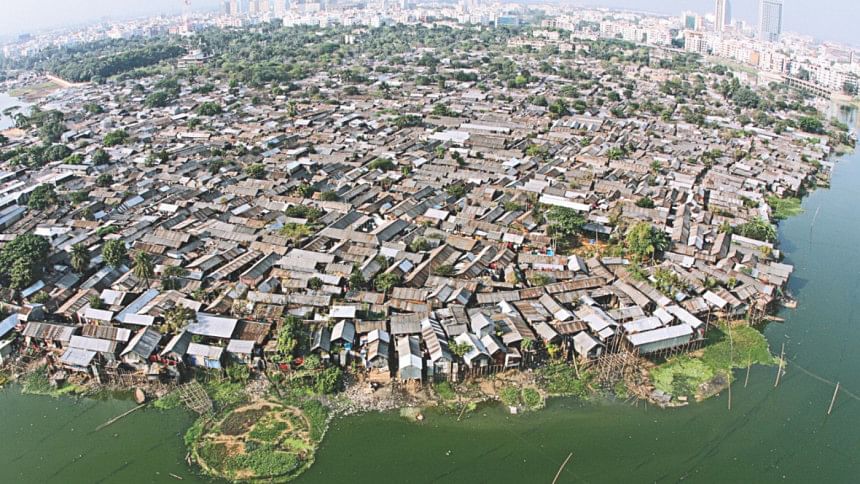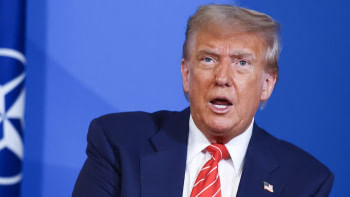Covid-19 response: What is still missing?

Prime Minister Sheikh Hasina has struck a bold and inspirational note, as the leader of the nation must, in her impromptu remarks on March 29 while receiving contributions to the Prime Minister's Relief Fund to support the fight against the covid-19 pandemic. She listed quite an agenda for a wide range of actions. She had spoken in the same vein in her television speech to the nation on March 25. But are all in her administration, and society at large, hearing her message and gearing themselves up to respond?
The Prime Minister spoke of supporting the vulnerable members of society during this time, referring to social welfare programmes at the district, upazila, union and ward levels to ensure the supply of food and other essential items. She also stressed on the importance of maintaining social distance, while acknowledging the dilemma this creates in terms of livelihoods and food shortages in the absence of employment.
Do we really know where we stand today in respect of the pandemic's incidence of infection, recovery and number of deaths? What can we say about its trajectory, and the time it may take to reach its peak? Does one develop immunity against the disease by being infected, and how long does this last? When and how can the lockdown, social distancing and isolation be eased or further extended and expanded?
It is in the nature of a virulent and new viral zoonosis (diseases passed from animals to humans) that no definitive answers can be given to these questions. Countries with much greater technical capabilities and resources than ours are debating the answers.
Statistics 101 tells us that the numbers given in daily briefings every day by the Institute of Epidemiology, Disease Control and Research (IEDCR) are only numbers, which do not provide any epidemiological insight. Since there is no widespread testing based on representative population samples, the number of cases of infection detected and deaths recorded are numbers which cannot be compared to a denominator, the number of potential vulnerable cases, to derive percentages or proportions.
We simply do not have the epidemiological data for infection rates in the population and other rates, such as caseload, morbidity and mortality. Many wealthier countries, notably USA, seem to be in the same boat. In the absence of the epidemiological estimates, the health experts can only speculate about the trajectory and pattern of the curve of the disease, its peak, and the wind-down.
Suggestions have been floated in international media that "herd immunity"—enough people being exposed to the disease, developing immunity and breaking the cycle of infection—may be the answer. Herd immunity is an epidemiological concept that describes the state where a sufficient number in a population is immune through vaccination or acquiring natural immunity, and the vulnerable minority is then protected.
Experts regard this untenable as a preventive strategy because there is no vaccine yet, and it is not known yet if immunity is developed naturally against Covid-19, and if so, for how long. If immunity is acquired against the virus (a big "if"), it is estimated that at least 70 percent of a population have to be exposed to achieve herd immunity, given its person-to-person transmission rate. That is 125 million people for Bangladesh. Imagine the resulting numbers of deaths and sickness.
It is clearly both a health and economic pandemic, as the Prime Minister implied. The consequences of either can be equally devastating and the effects, unfortunately, feed on each other. The ongoing lockdown in Bangladesh has been extended by a week and may have to be extended again.
India, with its 1.3 billion people, has gone into a strict nationwide lockdown for three weeks from March 25, and in all probability this will have to be extended. USA has extended its federal lockdown to the end of April. Prime Minister Shinzo Abe of Japan said over the weekend that Japan was now at risk of an explosion of cases, with a spike in new cases in Tokyo, and a state of emergency may be in the offing. Spanish officials said that they have to impose more rigorous restrictions on residents' movements, leading to a national period of "hibernation."
In all probability, the worse is to come for Bangladesh before it gets better. Intensity and scope of the crisis and uncertainty about the timeline point to the urgency of government actions on a war footing.
Should there not be a cabinet task force to oversee, guide and take policy and strategic decisions on a daily basis? And should this taskforce not be supported by two inter-ministerial technical committees for health and safety and for economic support and relief, each headed by a cabinet member? These bodies would be able to assess the situation, take necessary decisions, and inform and reassure the public in a coordinated, coherent and authoritative way on a daily basis. The attention of these bodies are needed at least in the following areas.
Medical and health service response: guidelines and rules for medical facilities, public and private, throughout the country, have to be provided in order to serve people in need of care—whether they are affected by covid-19 or other ailments. Medical personnel have to be mobilised, supported and protected and given clear ground rules. Procurement, production and distribution of supplies and protective gear have to be arranged.
Surveillance and testing: there need to be guidelines and rules for testing for diagnosis and surveillance so that reliable epidemiology can be built up. Could the Gonoshasthaya Kendra test, cheap and quick, be supported and used widely, including for national sample surveys? This can help future surveillance and containment strategies that will be needed.
Economic support and relief: lists have to be prepared in each union and ward that need food and income support, especially in the informal sector, and this support and relief have to be delivered using existing safety nets and complementing these as needed. Can there be a moratorium on rent and utility charges for slum dwellers and low-income families? Transparency and involvement of community groups, youth and NGOs can help ensure efficiency and honesty in this effort.
Education measures: the school closure has to be prolonged. What can be done to support students, teachers and parents beyond steps initiated?
Treating infected people with compassion: deplorable behaviour towards suspected cases and burial of the dead arise from ignorance and superstition. Safety measures have to be observed, but surely the virus cannot jump out of the grave to infect people. More has to be done on an awareness and re-assurance campaign.
A major revision of the 2019-20 budget is in order, to redirect allocations and provide economic relief and support targeting of the most vulnerable. Many countries have designed stimulus and relief packages committing 10 percent or more of GDP. The next budget for 2020-21, in addition to a focus on restart and recovery of the economy, must have a contingency plan to continue support and relief, if elements of the crisis persist.
Control rooms have to be set up under the cabinet office and at the district levels. There has to be daily authoritative briefings for the public from the cabinet taskforce, as has been seen in many other countries. We are in a war, which must be won.
Dr Manzoor Ahmed is professor emeritus at Brac University.

 For all latest news, follow The Daily Star's Google News channel.
For all latest news, follow The Daily Star's Google News channel. 



Comments